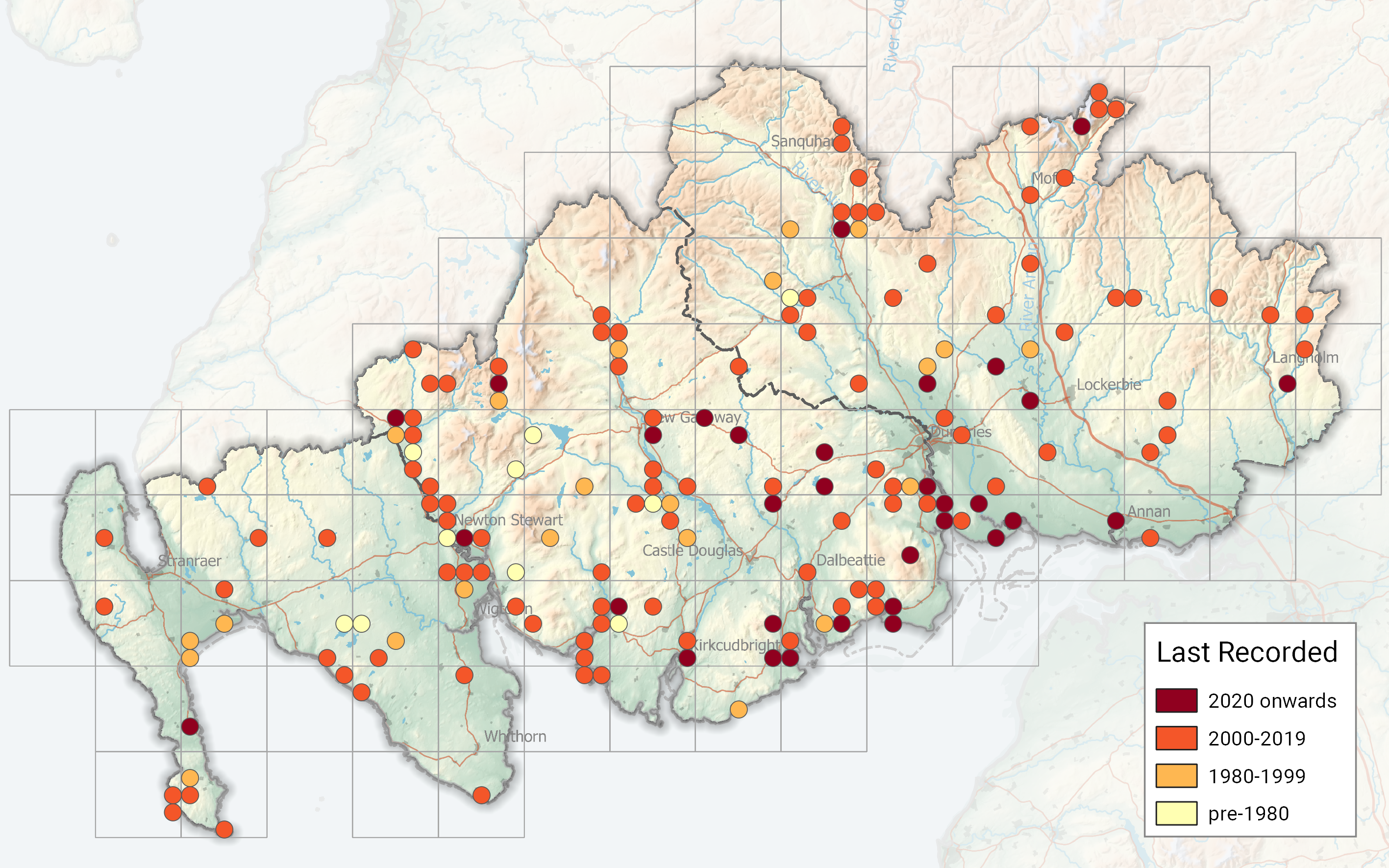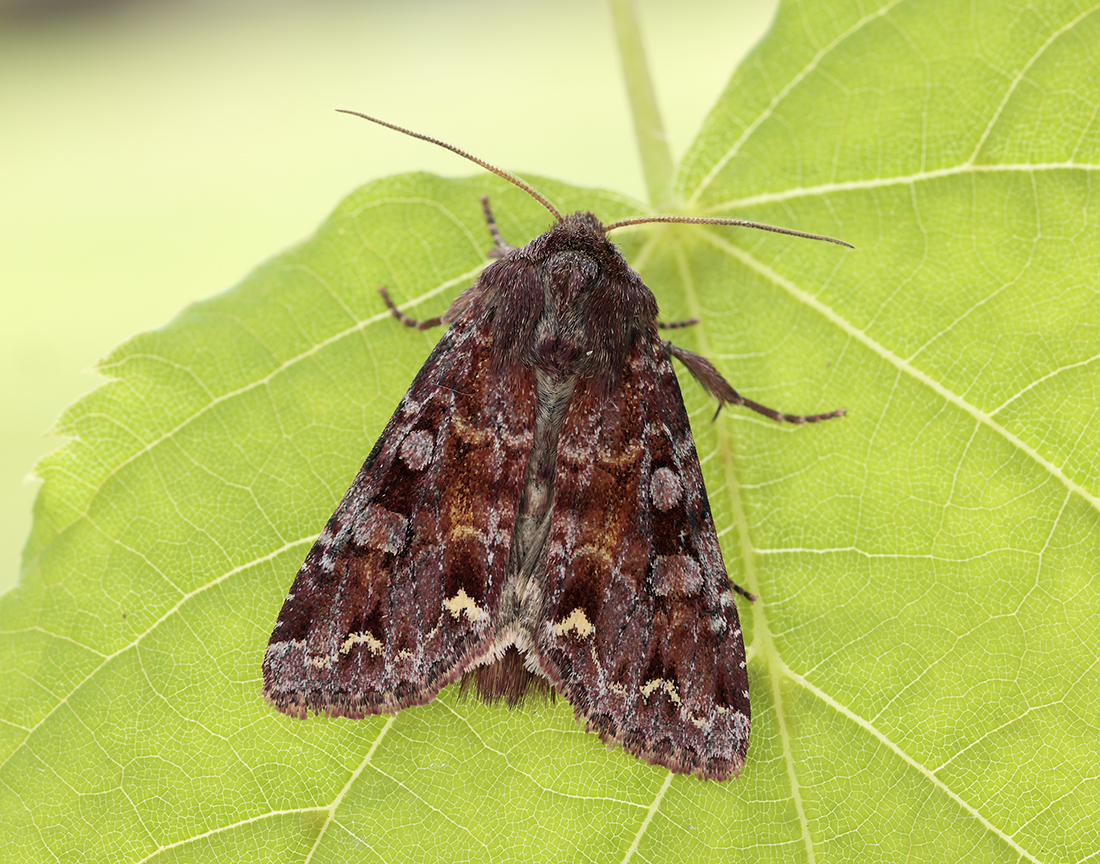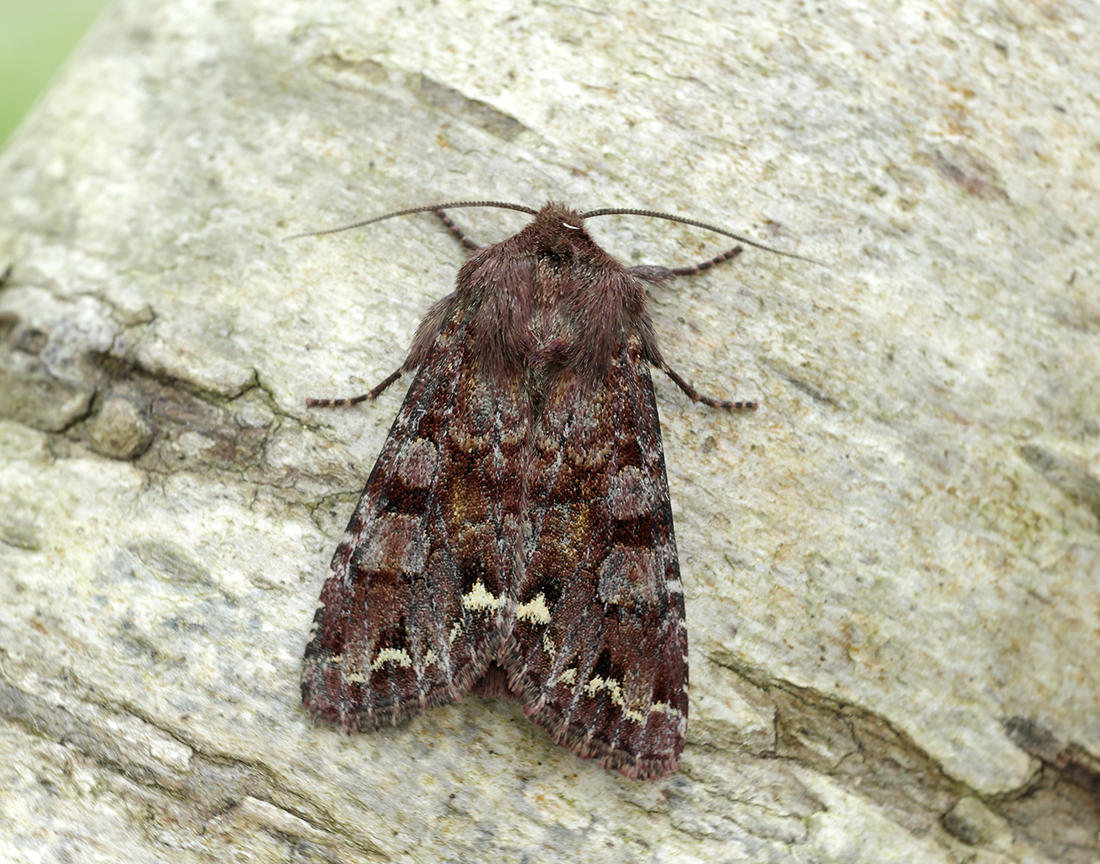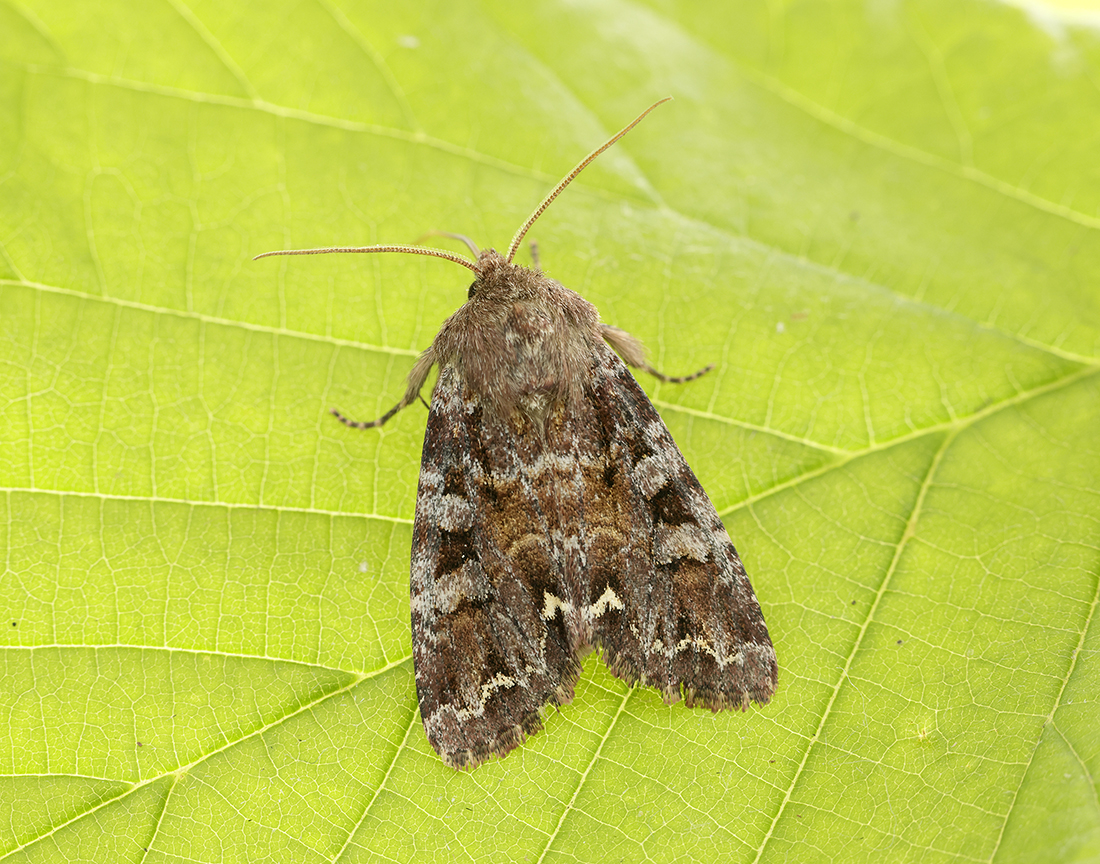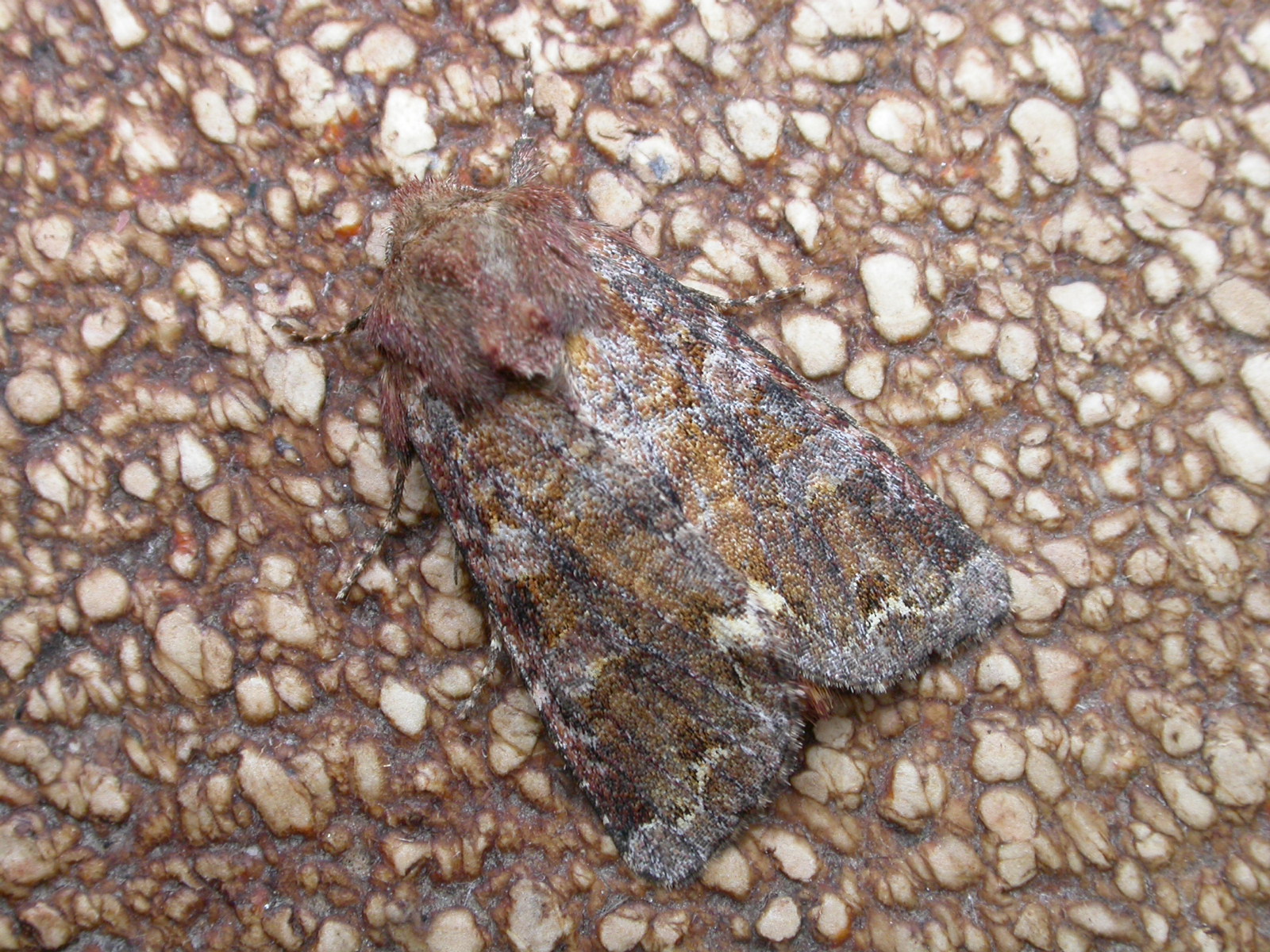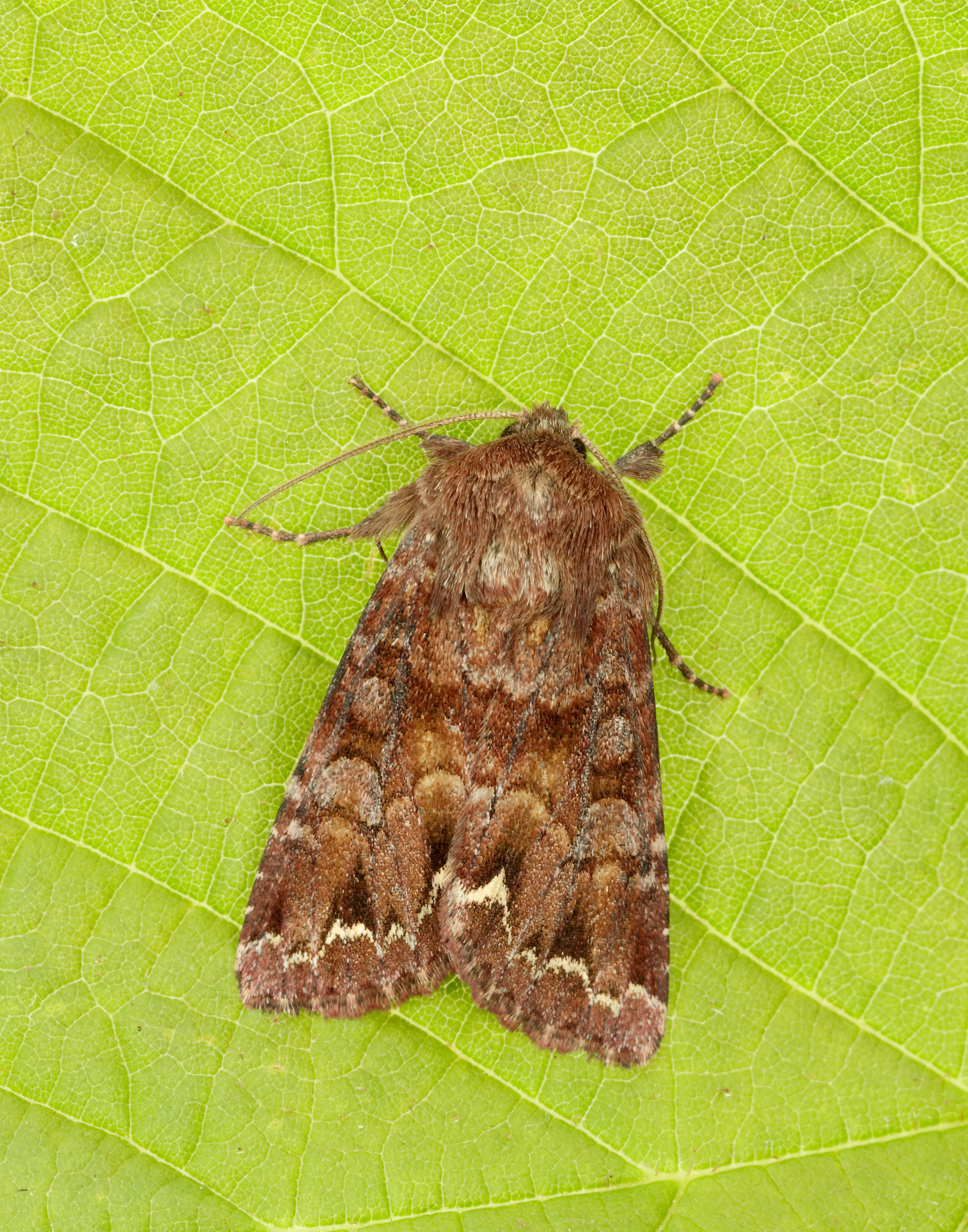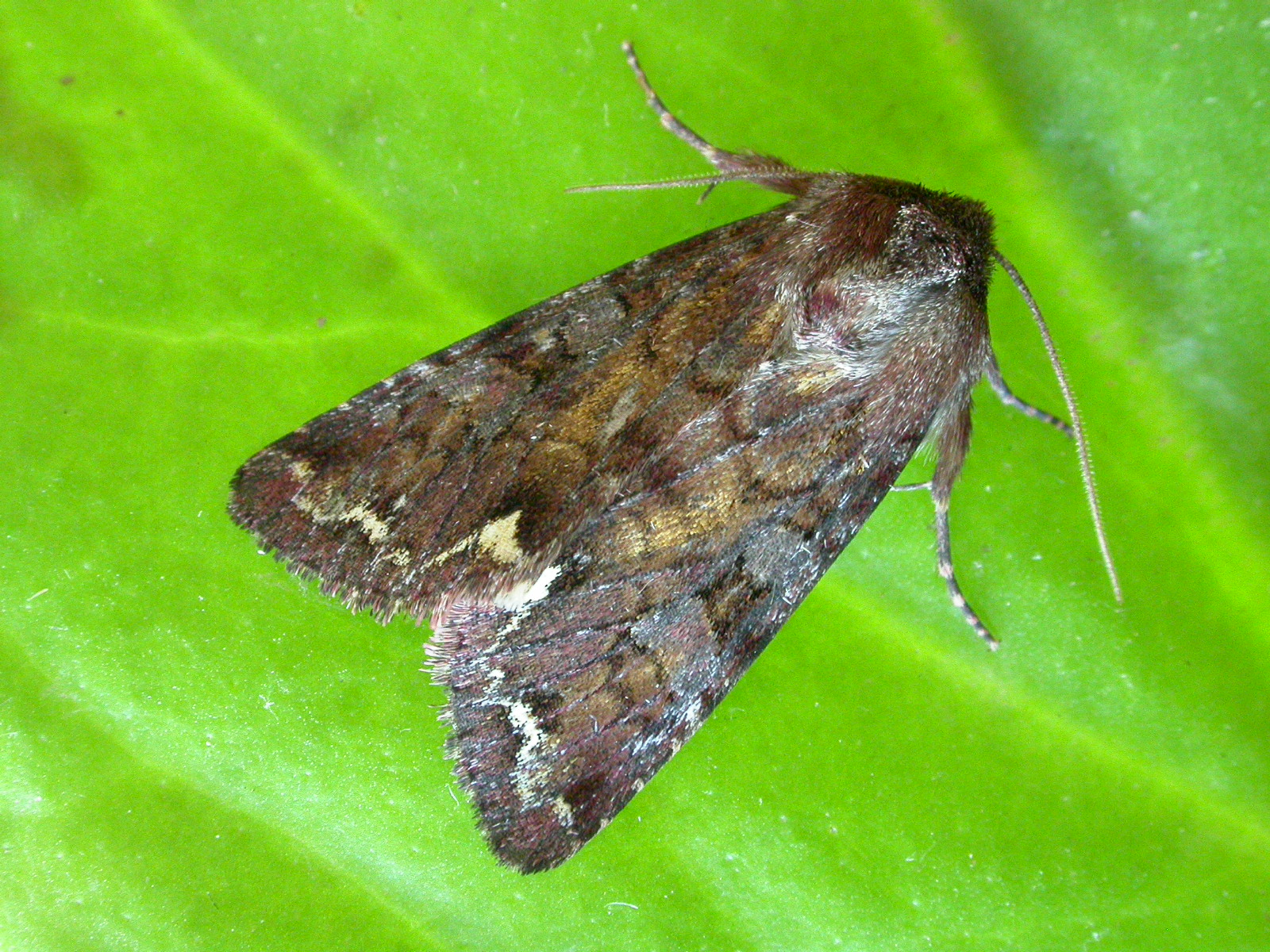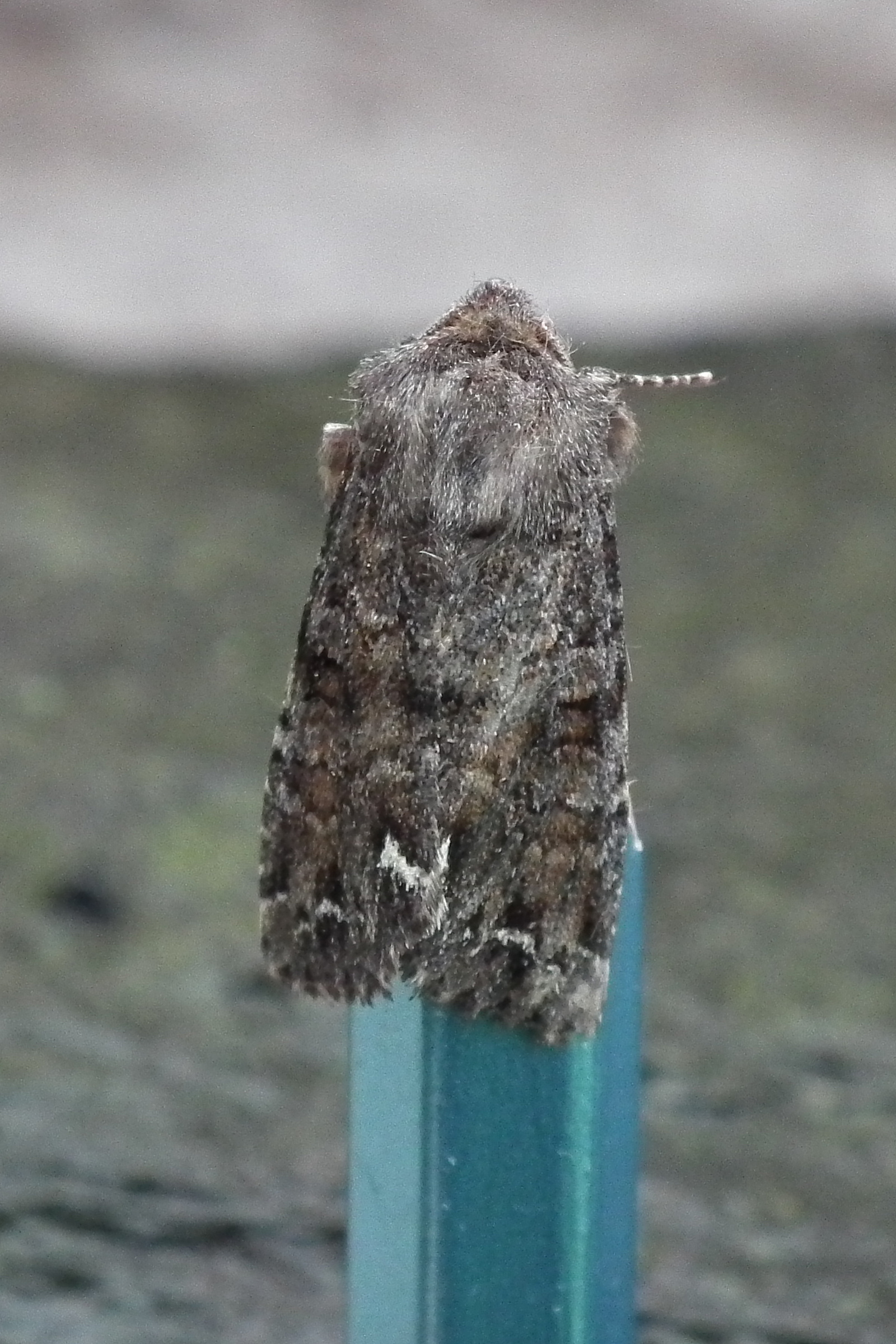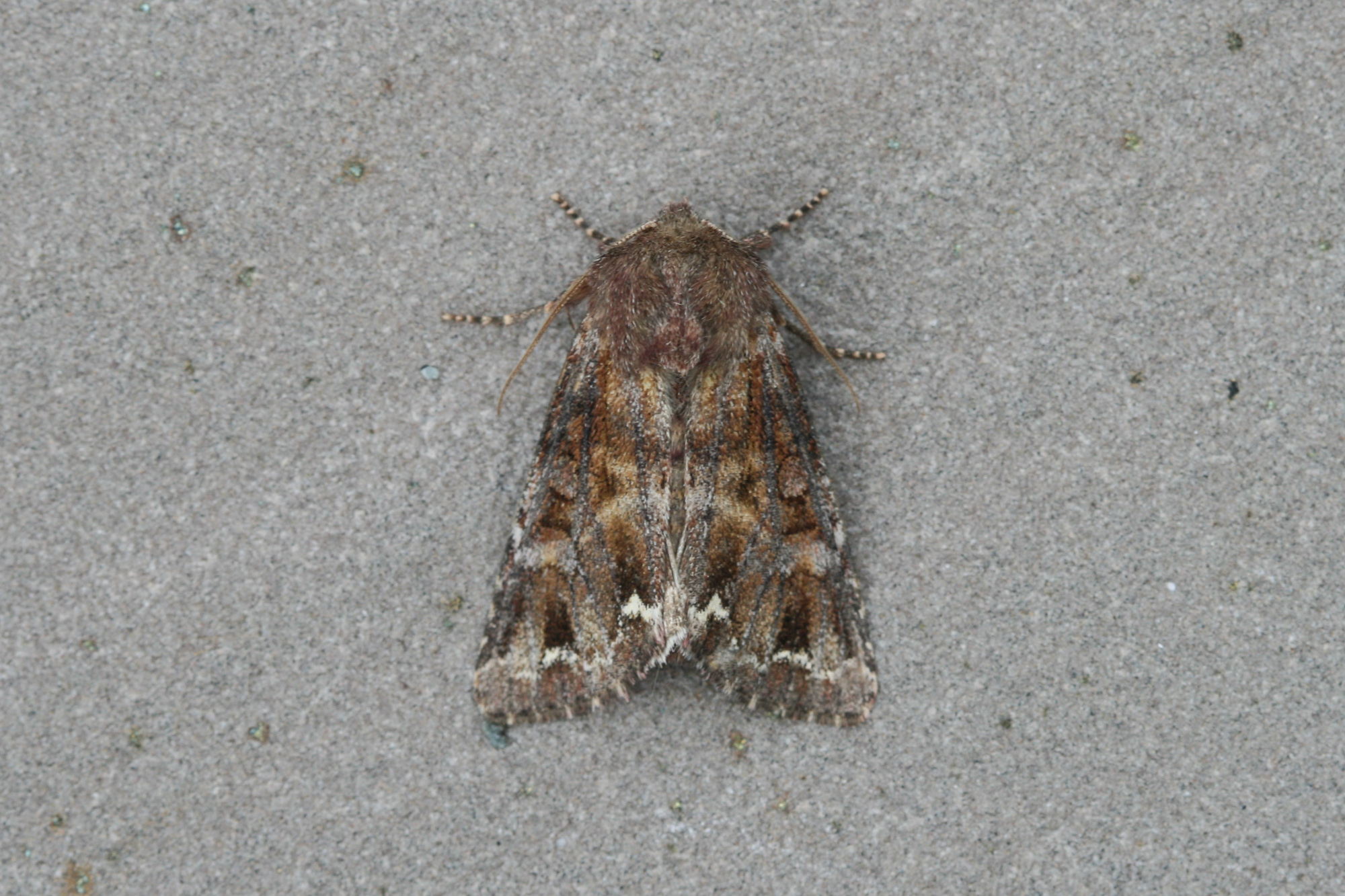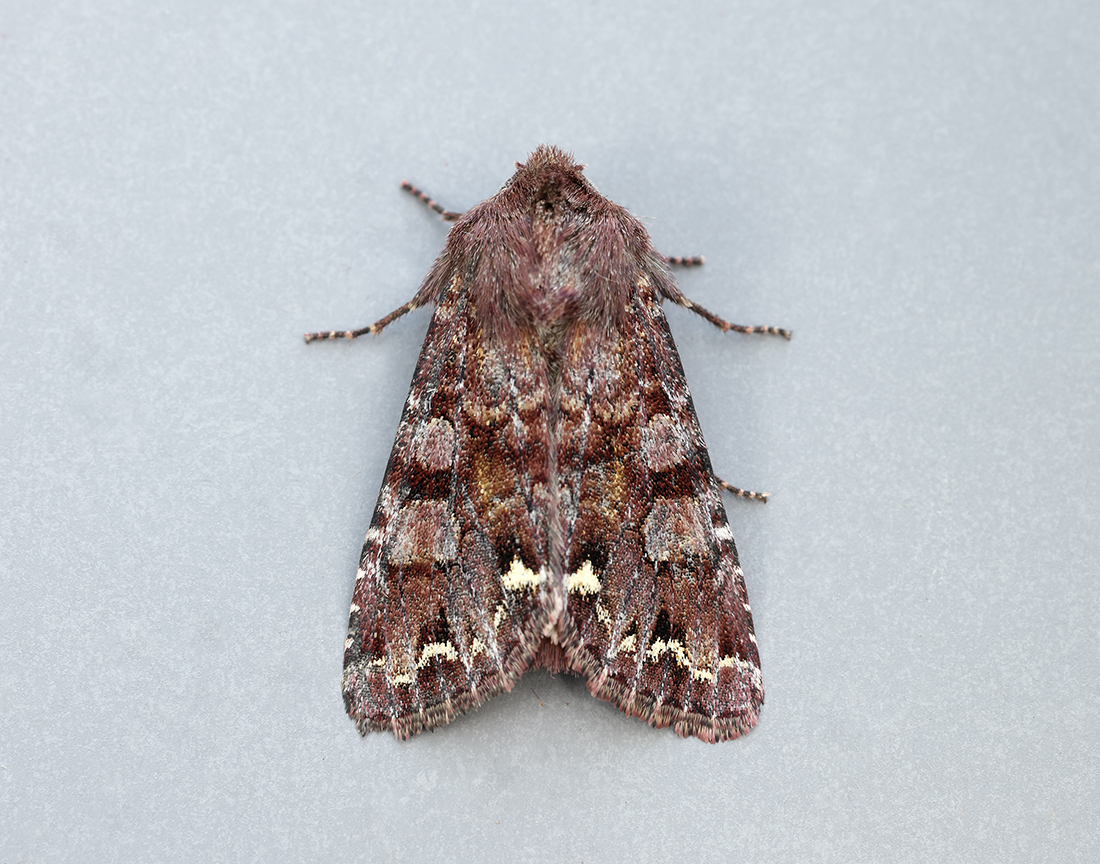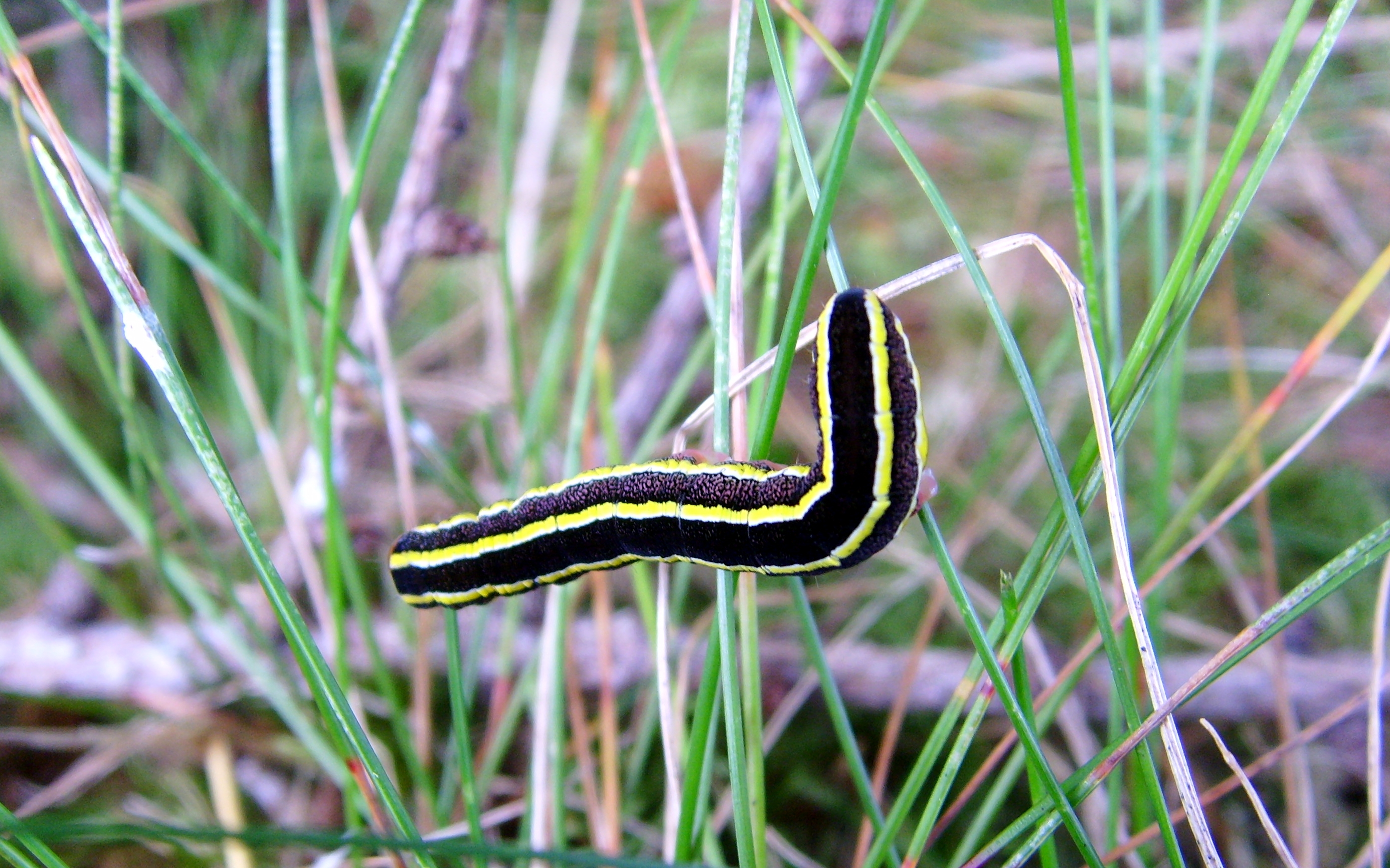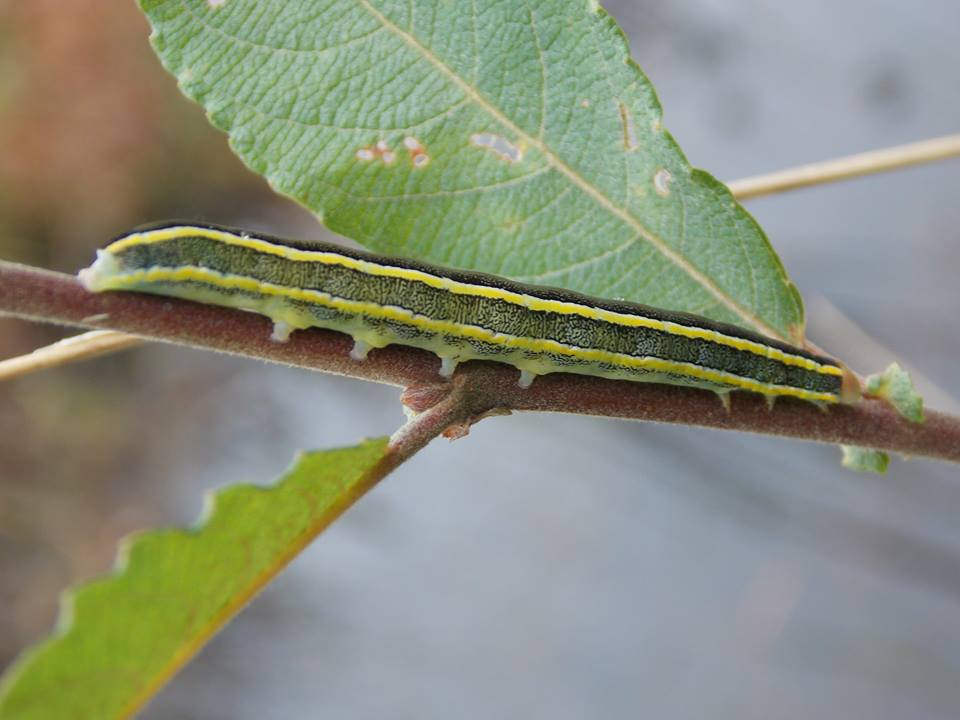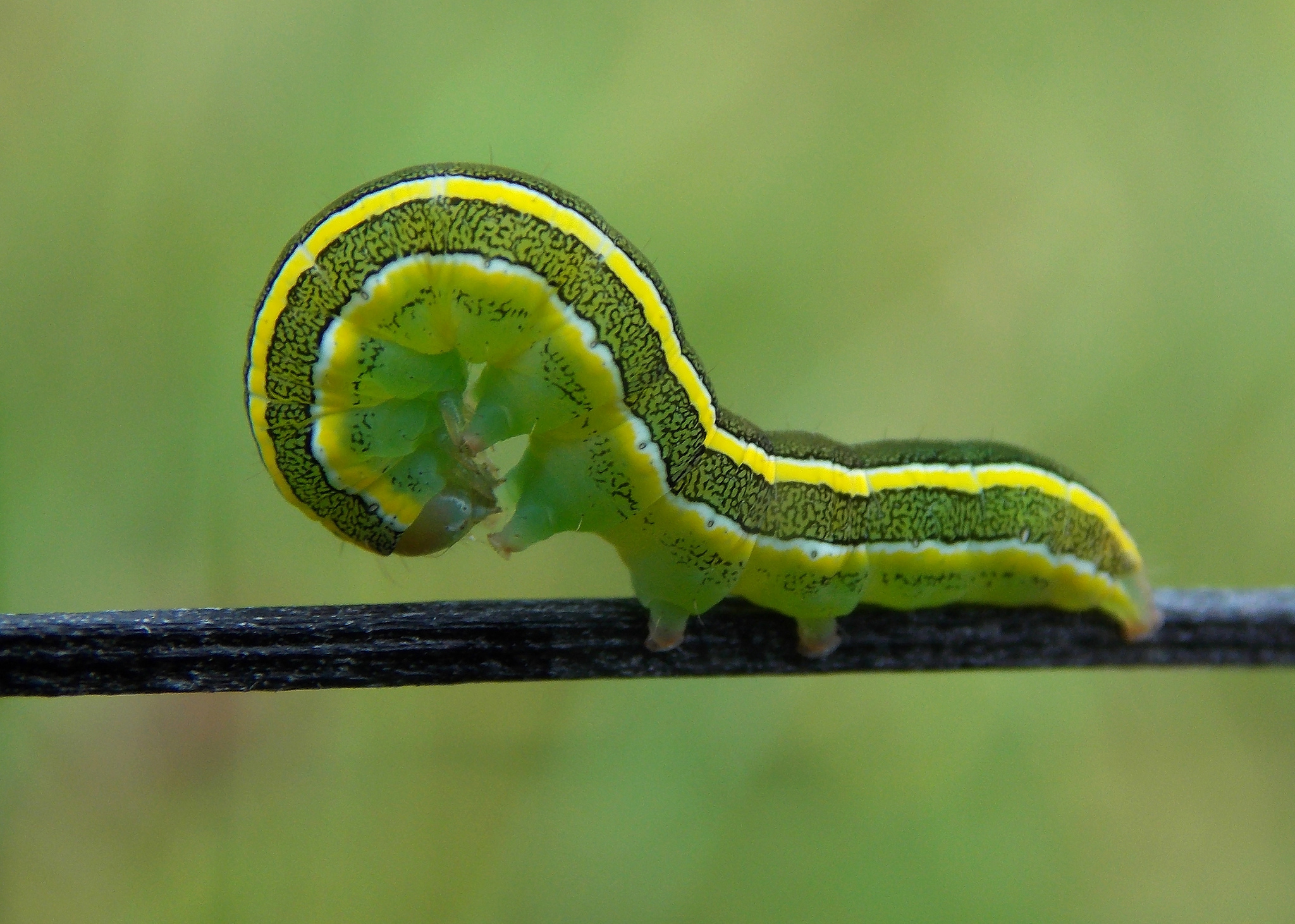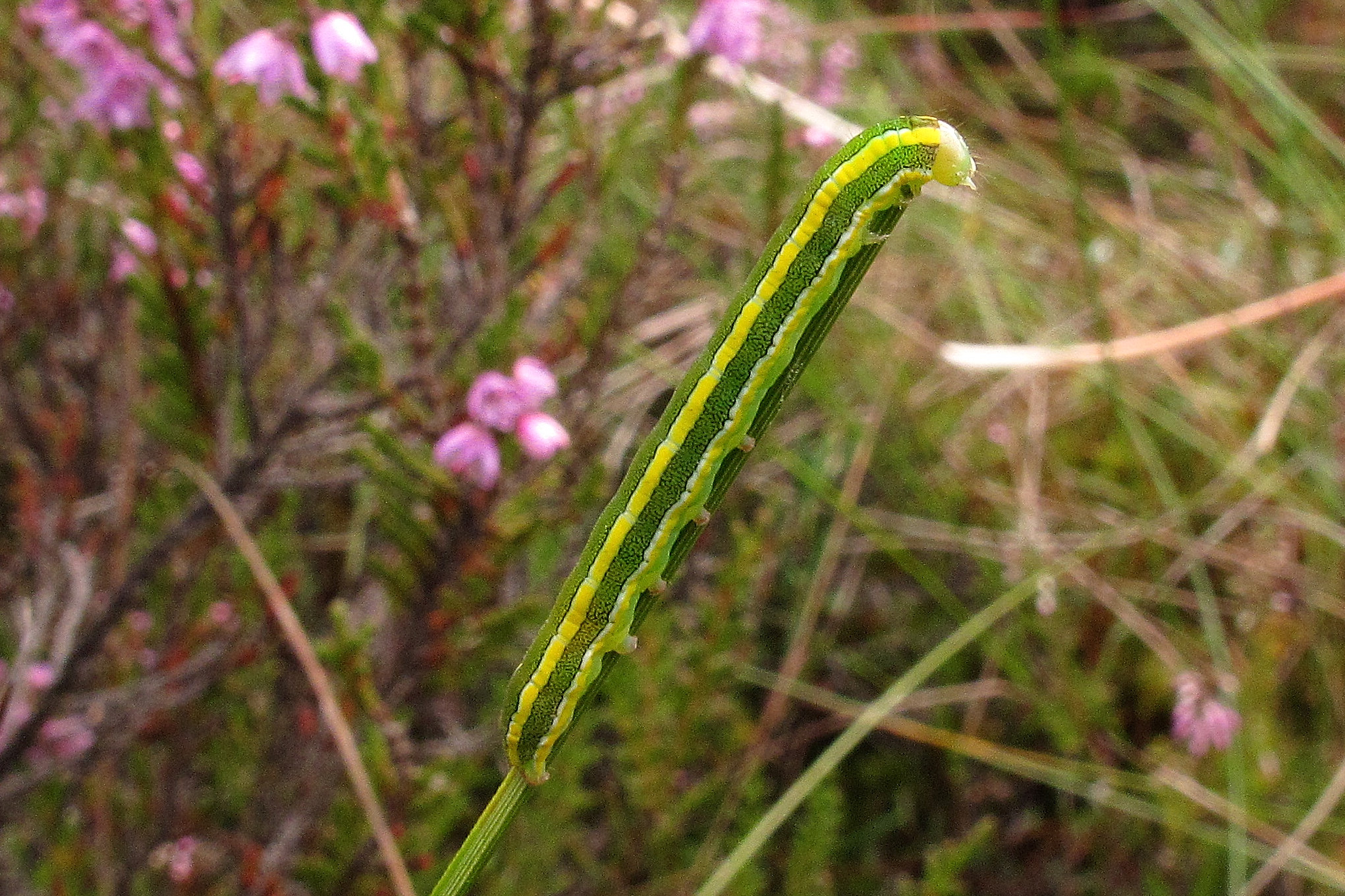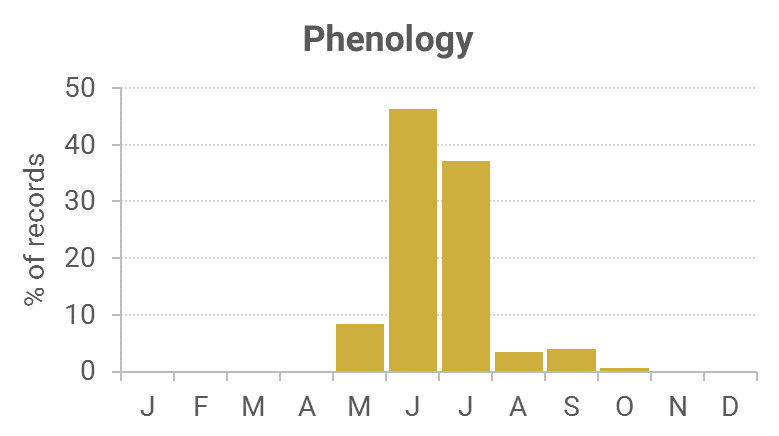Identification
The creamy-white irregular cross-line near the termen with dark arrowhead marks or blotches on the basal side, on a rather broad forewing is diagnostic.
Recording Method.
Attracted to light, also comes to sugar and flowers.
Life cycle
One generation. Overwinters as a pupa in an underground cocoon. Larvae appear during June to September, being active at night.
Larval foodplants
Larvae feed on a range of herbaceous and woody plants including Heather, Bracken, Broom, Bramble, Larch and willows.
Habitat
Open habitats, including heathland and moorland. Less frequently in woodland and wetland.
History
Somerville (1858) had found the larvae on rushes near Moffat whilst on a visit in August of that year. Lennon (1863) had noted it as occurring near Georgetown on the Lochar Moss (VC72). Gordon (1913) had found it common and generally distributed in Wigtownshire, especially on the moors in June. In September the larvae were abundant on bog myrtle. Earliest date was 6th June 1911.
Sir Arthur Duncan (1909-84) during his lifetime had found it at Tynron, Closeburn and Castlehill, Dumfries.
During 1974-94 there were forty records from five of the seven Rothamsted stations, Waterside Mains and Bridge of Dee not recording it.
During 1982-84 it was trapped regularly on the Hensol Estate. Kirkton, Durisdeer and Carsfad produced a steady trickle of records during 1988-2005.

